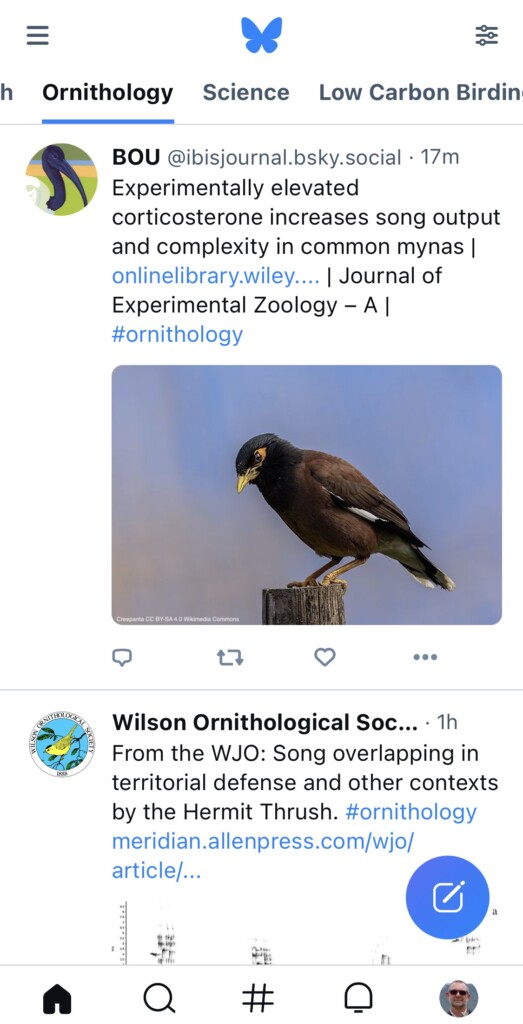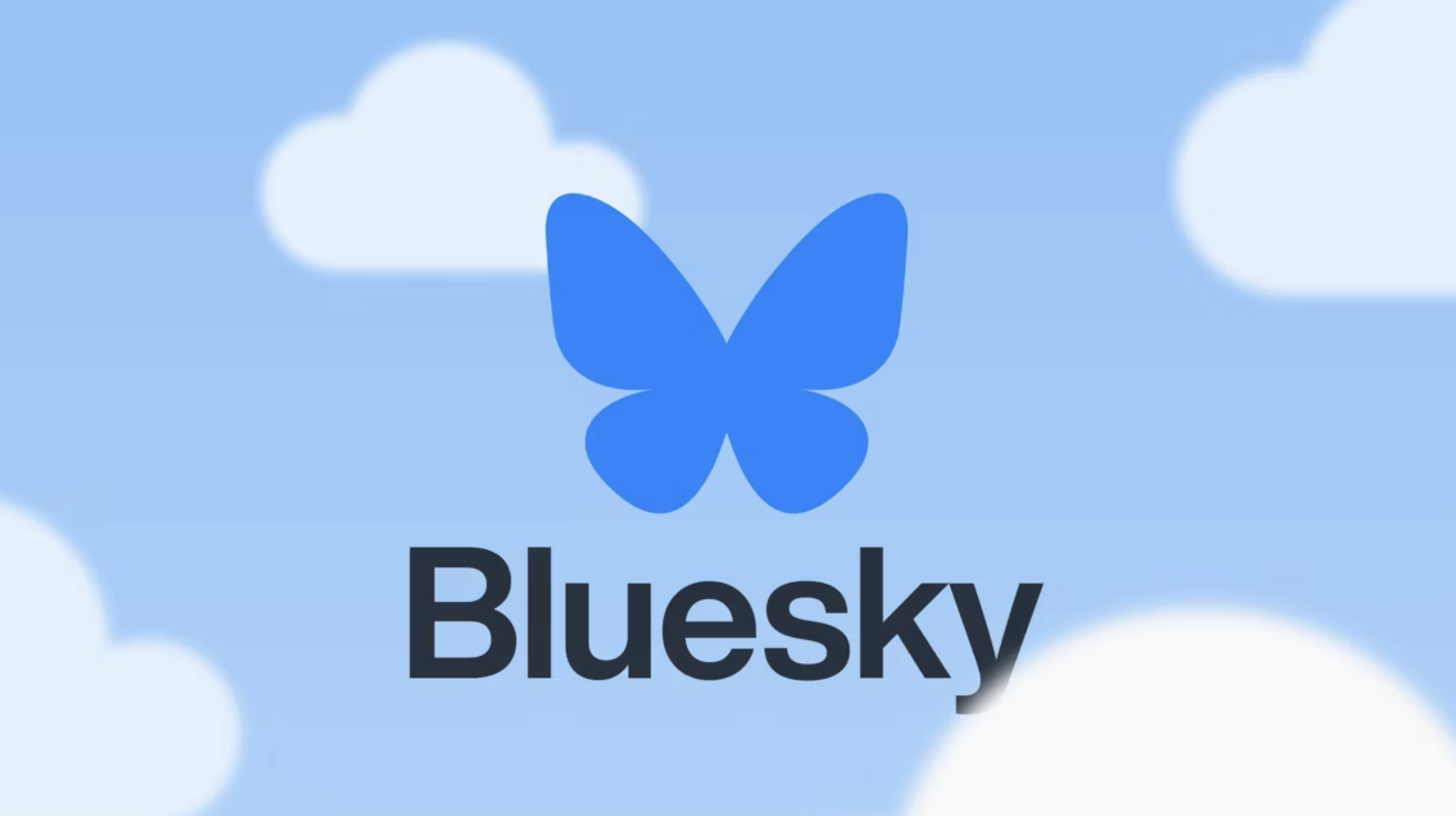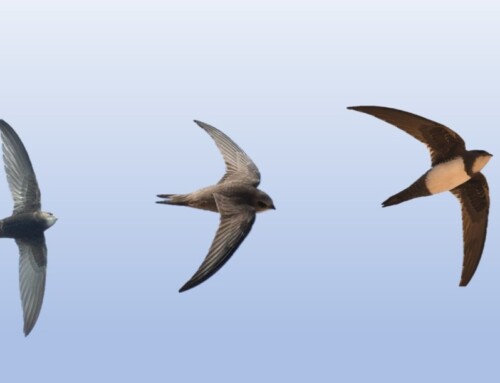
Twitter was once a dynamic platform for ornithologists and other researchers to engage on. I drove the BOU’s presence on the platform for over a decade and helped to establish a vibrant and diverse ornithology community there. However, after the sale of Twitter in 2022, and the platforms subsequent decline into the rebranded X platform, many researchers including ornithologists, and especially those from the LGBT community, left the platform in 2023 as it was no longer the safe and enjoyable space they’d come to know and love.
As Twitter haemorrhaged users, new, developing platforms sprang up and were trialled –including Mastodon and Threads – none of which provided the Twitter alternative that many of us were seeking.
Look to the sky
Then came Bluesky Social (simply known as Bluesky, or sometimes BSky). I was lucky to get an access code when it was still ‘by invitation only’ (the platform only opened fully earlier this year) and I was immediately struck by just how Twitter-like the platform was. It instantly felt familiar.
This shouldn’t come as a surprise given its roots lay deep within Twitter, for Bluesky is an open-source social network founded by, among others, Twitter co-founder Jack Dorsey. Being open-source means that, unlike other social networks, there is no single entity with complete control over the platform, it is completely transparent in how it works, and how posts are moderated and it is shaped by its users.
So, it looks a lot like Twitter, and it feels a lot like the Twitter I joined in 2011. And because it is open-source, it is advert free and feels fresh and safe. The latter is critical after so many people’s experiences of Twitter since late 2022.
Then there were Feeds
This open approach also means that, despite some similarities, there are also some fundamental differences between Bluesky and Twitter. A key one is the hashtag. Twitter tried to drive the use of tags, but it soon became an unruly free-for-all with everyone and their dog making up tags on the fly. Tags are great for events (as long as have a unique one), but it got harder for general users, including researchers trying to group people and content together, as communities fragmented with the loss of key community members.
Bluesky has resolved many of these issues by implementing hashtag use as we know it from Twitter into ‘Feeds’, that function as curated, user-driven timelines (or, skylines on Bluesky). Feeds collate content and use hashtags, keywords, usernames and even emojis, to group subject content. Users then follow/subscribe to Feeds that interest them – just search for your interest be it ornithology, birding, politics, photos of cats, or whatever – and there’s sure to be a Feed for you.
Anyone can set up a Feed and a well-managed Feed is a real thing of beauty. Feeds tend to be like Russian-dolls – Feeds sitting within one another – with broader Feeds collating the content of narrower-focused Feeds. For example, we already have a mature Science Feed (managed by Dani Rabaiotti) that collates, among many other topics, the fast-growing Ornithology Feed (managed by the BOU). Likewise, there is a Feed for birds generally that collates posts on birding, bird art and photography, Big Bird from Sesame Street and pretty much anything else bird-related. For birders there are a number of dedicated Feeds that collate just birding content at different scales – a global one (Birding), one for just UK birding (UKbirding managed by Jamie Dunning), another for birding in Scotland (birdingScotland, managed by Jared Wilson), regional birding (e.g. WorcsBirding) and even several for well-watched local patches (e.g. uptonwarren). Many individual birders also use their own hashtags to collate their own birding content in the traditional way (and not as a Feed), such as my own #WestrayBirding, and these are then collected by the various Feeds.
So, in practice, my #WestrayBirding hashtag is collected by the birdingScotland Feed, which in turn is collected by the UKbirding Feed, which in turn is collected by the Birds Feed – a Russian doll. I see the same happening within ornithology when more researchers join Bluesky and want to set up discrete Feeds for their own area of ornithology which will then all be collated by the main Ornithology Feed.
Another benefit of the Feeds system is that it gives you algorithmic choice. That is, you decide what you see by which Feeds you follow, not content churned out by some algorithm based on your use of the app.

Figure 1. The Ornithology feed on Bluesky run by the BOU.
Accessing Feeds
Following a Feed is simple. Once you’re logged into BlueSky, select the hashtag icon (at the bottom of your screen on your mobile app or the left-hand side of your screen in the web client). From there you can search in ‘Discover New Feeds’ (popular Feeds are listed here without searching). If you search ‘Ornithology’ the BOU-managed Feed will appear in the list. Select the ‘+’ icon on the right and the Feed is saved to your list of Feeds (and by selecting a Feed from your saved list you can then ‘pin’ any Feed you follow to your own home screen). That’s it! You’re now part of that community and can post and share by tagging your own posts with the Feed tag/keyword/emohiji (in this case with the #ornithology tag).
No followers, no problem
So, Feeds are dynamic and are what drives Bluesky, not the rush to attract new followers like most other social platforms. You can have no followers yet subscribe to several active Feeds and feel instantly connected and able to engage with others in these discrete communities. Well-managed Feeds can dictate what content appears on them. Many are open and all you have to do is use the Feed tag, keyword(s) or emoji and you’re posts will appear there. Some Feeds, such as Science, only allow registered users to post to the Feed itself but the content is open for everyone to read and engage with. Inappropriate content can be blocked from the Feed by the Feed owner/moderator, even when the post contains a relevant tag.
Community needs?
With my old BOU hat on, I can instantly see the community benefits of Bluesky for societies and groups – and far greater than we ever had on Twitter. Just as the BOU currently runs events on Twitter, I can easily see organisations and groups hosting similar events on Bluesky using their own event Feeds. No other platform could handle a social media event in this way, but for this to be a reality we need more people to come over and help us to build communities within Bluesky.
Still growing
Bluesky is still developing. Some functionality hasn’t yet been delivered, such as direct messaging within the platform (update: added on 23rd May) or video media in posts, but it’s getting there. And with more of us using the platform, additional functionality will be delivered faster as developers incorporate our user needs.
Some key bird organisations have already migrated to Bluesky – BOU, BTO and RSPB – but we need a critical mass of users there before they, and others, feel they have a large enough audience to really start building their own presence and consider running Bluesky events.
Welcome home
Bluesky is fast becoming a new home for many communities that once thrived on Twitter. As you can see above, there are already familiar names managing the core ornithology and birding content. And, as you’d expect with a community driven platform, there is plenty of help for newbies both on the platform and elsewhere.
So, come over and give Bluesky a try and hopefully like many of us already there, you’ll rediscover the community you thought was lost and your love for social engagement reborn.
The BOU and Bluesky
BOU is making its presence known on Bluesky (@ibisjournal.bsky.social) and we can feel the beginnings of a thriving ornithological community with good engagement across our posts. We now post regularly on Bluesky about ornithological research and events, including IBIS papers and BOU news, and are proud to have taken to Bluesky for the first time at our BOU Annual Meeting #BOU2024. Here we asked our presenters for voluntary contributions, which can be found within our #BOU2024 Feed: a fantastic demonstration of how Bluesky can work to promote ornithology and to deliver online conferences. However, at present, the BOU’s reach on Bluesky, in terms of followers, doesn’t yet reach that of X (Twitter) and we’re not quite ready to abandon the ornithological community on X (Twitter) that we’ve worked to build. At our most recent #BOU2024 conference, every presenter delivered a simultaneous X (Twitter) thread that summarised their poster or talk, which has made the conference, and ornithological research, truly inclusive and accessible.
Where is BOU heading? We have certainly noticed a significant shift in the Twitter-sphere, and we will continue to explore engagement opportunities across social media platforms and promote ornithology across them. When it comes to conferences, for the time being, X (Twitter) is our main means of delivering the parallel free-to-view conference format, whilst we continue to monitor our reach on Bluesky, and remain respectful of those members of the ornithological community who no longer wish to participate via their own X (Twitter) account.
Join the Bluesky community
Download the mobile app (iOS and Android) from your usual app store or go to https://bsky.app/ to use the web client.
Further reading and resources
Bluesky Social New User Guide (highly recommended!)
What is Bluesky? Everything to know about the app trying to replace Twitter
How to get started using Bluesky Social: Everything you need to know
What is Bluesky, and how is it different from Twitter?
Blog posts express the views of the individual author(s) and not those of the BOU.
If you want to write about your research in #theBOUblog, then please see here





